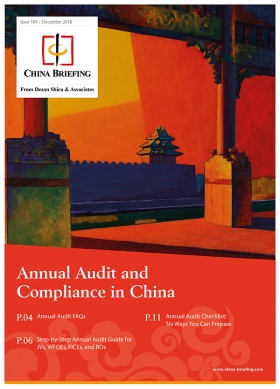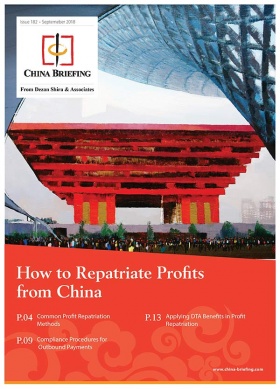Tesla to Pay US$323 Million a Year in Taxes for New “Gigafactory” in Shanghai
Tesla has agreed to pay about US$323 million in yearly taxes as well as roughly US$2 billion in capital expenditure over the next five years on its newest Chinese plant.
Dubbed ‘Gigafactory Shanghai’, the plant is one of three planned Gigafactories by Tesla; the other two being constructed in Nevada and New York, respectively.
The plant’s construction in the Shanghai Pudong district’s Yangshan Free Trade Port Area comes partly in the wake of retaliatory tariffs from China on US automakers last year.
The ensuing price hike on Tesla’s Model-3 cars in China caused sales to plummet by a whopping 70 percent on the mainland.
The move also coincides with a 2018 concession by the Chinese government to allow foreign electric vehicle (EV) manufacturers to forgo the traditional 50 percent foreign ownership cap for outside companies operating in the country. A full rollback for the entire automobile industry is scheduled by the year 2022.
The investment cap had previously stalled Tesla’s initial plans, announced in 2017, to manufacture in the country due to concerns over IP security.
Tesla’s Gigafactory Shanghai
Tesla expects its Model-3 production in Shanghai to enable competitive local pricing. The company plans to sell roughly 150,000 Model-3s a year during its trial run.
“We believe the capital expenditure requirement and the tax revenue target will be attainable even if our actual vehicle production was far lower than the volumes we are forecasting,” Tesla said in the filing.
The cars are currently available for preorder in China at about US$47,400 each, according to their website. The price is higher than the car’s current US$38,990 starting price tag in the US and is expected to increase in China due to the devaluation of the yuan.
Much of the investment in Gigafactory Shanghai is expected to be funded through Chinese banks and financial institutions. This includes a March agreement with Chinese lenders for a 12-month credit facility of up to US$521 million for the Gigafactory.
The automaker has also committed to hiring at least one local employee for every US$1.8 million in annual revenue it generates. If current sales targets are hit, it could end up employing a local workforce of at least 6,000 people in Shanghai by 2023.
Tesla first broke ground on Gigafactory Shanghai in January of 2019 and hopes to finish construction and begin trial production by the end of the year.
Tesla goes it alone after China relaxes partnership rule
Tesla diverges greatly from other foreign automakers in that it is the first to establish a Chinese factory – without any support from a local company.
Competitors Renault, Ford, General Motors (GM), Volkswagen, and BMW all maintain previously established joint partnerships with Chinese automobile makers, formed shortly after China began allowing them in 2001.
IP concerns aside, foreign companies traditionally believe that partnerships with Chinese companies are necessary to secure favorable supply chain agreements with local manufacturers and to navigate local policies.
When the partnership rule was revoked in 2018, GM was quick to announce in a statement, “G.M.’s growth in China is a result of working with our trusted joint venture partners… We will continue to work with our partners to provide high-quality products and services to consumers.”
BMW subsequently upped its ownership to 75 percent in its joint venture with Brilliance China Automotive Holding Ltd. in October of 2018. Renault made headlines for beginning a fourth 50 percent partnership with Jianglin Motors in July of 2019, hoping to tap into the local EV market. Volkswagen released a statement that it was committed to its joint partnerships but would explore new possibilities.
Chinese automakers have often held mixed feelings regarding the opening-up of the sector. The suggestion of lifting the joint ownership rule was brought up in a 2013 conference but was quickly met with outcry from local manufacturers who claimed they weren’t ready to compete on the world stage.
Still, Chinese companies have profited handsomely from previous joint ownerships. They have, for the most part, been unable to produce a homegrown model that could successfully attract Chinese consumers and derive most of their profits from foreign models. Things, however, could be afoot.
Li Shufu, the founder of Geely, a large carmaker in Zhejiang province in eastern China, with no foreign partners, famously stated in a 2014 e-mail interview that, “The [50 percent ownership] cap has hindered fair, open and transparent competition, which undermines the interests of consumers and the overall competitiveness of the Chinese auto industry.”
Why the Chinese market matters to EV producers
For EV producers, it is almost inconceivable to do business without access to China’s market.
EVs make up three percent of the automobile market within the country (almost six times that of US) and it controls between 50 and 77 percent of the global market for electric battery manufacturing. It produces 99 percent of the world’s electric buses.
While China has only recently seen an increase in electric car purchases, it has a well-established infrastructure for EVs. A government mandate set in 1999 established electric scooters that travel 20 kilometers per hour, categorized as “bicycles”, and did not require registration or a driver’s license.
Motorized travel suddenly became available for a much larger percentage of the Chinese population and spurred intense growth, innovation, and infrastructure for charging electric scooters. As of 2019, China made up 90 percent of the 40 million global e-bike sales.
An boom in EV purchases was brought about in 2018 largely due to a government push for the purchase of electric cars as part of the “Made in China 2025” plan and more generally as a way to combat rising pollution levels. These included a US$7,500 tax rebate on purchased electric cars as well as subsidies for local manufacturers subsequently spawning over 400 EV companies in the country.
Last week, Chinese authorities announced an exemption from the 10 percent purchase tax for “battery-electric and plug-in hybrid vehicle makers”, which should benefit Tesla’s cars as well.
China touts competitive neutrality to attract foreign investment
While government subsidies in the EV sector were significantly rolled back in 2019, it is important to note that they were often only applicable to Chinese car companies. The rollbacks effectively diminish competition for foreign newcomers like Tesla.
The Chinese government seems to be trying to send a clear message to foreign businesses that they hear their complaints and want to reassure them that China is still a worthy place for investment.
The phrase “competitive neutrality” is now a buzzword in Beijing and prolific agreements like the one with Tesla hold the government accountable in a very substantial way. It remains unclear whether the sudden easing of restrictions is directly due to pressure from the trade war or a general slowdown of the Chinese economy.
About Us
China Briefing is produced by Dezan Shira & Associates. The firm assists foreign investors throughout Asia from offices across the world, including in Dalian, Beijing, Shanghai, Guangzhou, Shenzhen, and Hong Kong. Readers may write to china@dezshira.com for more support on doing business in China.
- Previous Article Social Security Agreement between China and Japan Effective September 1
- Next Article Hong Kong vs Singapore: What’s Next for Foreign Investors in Asia








